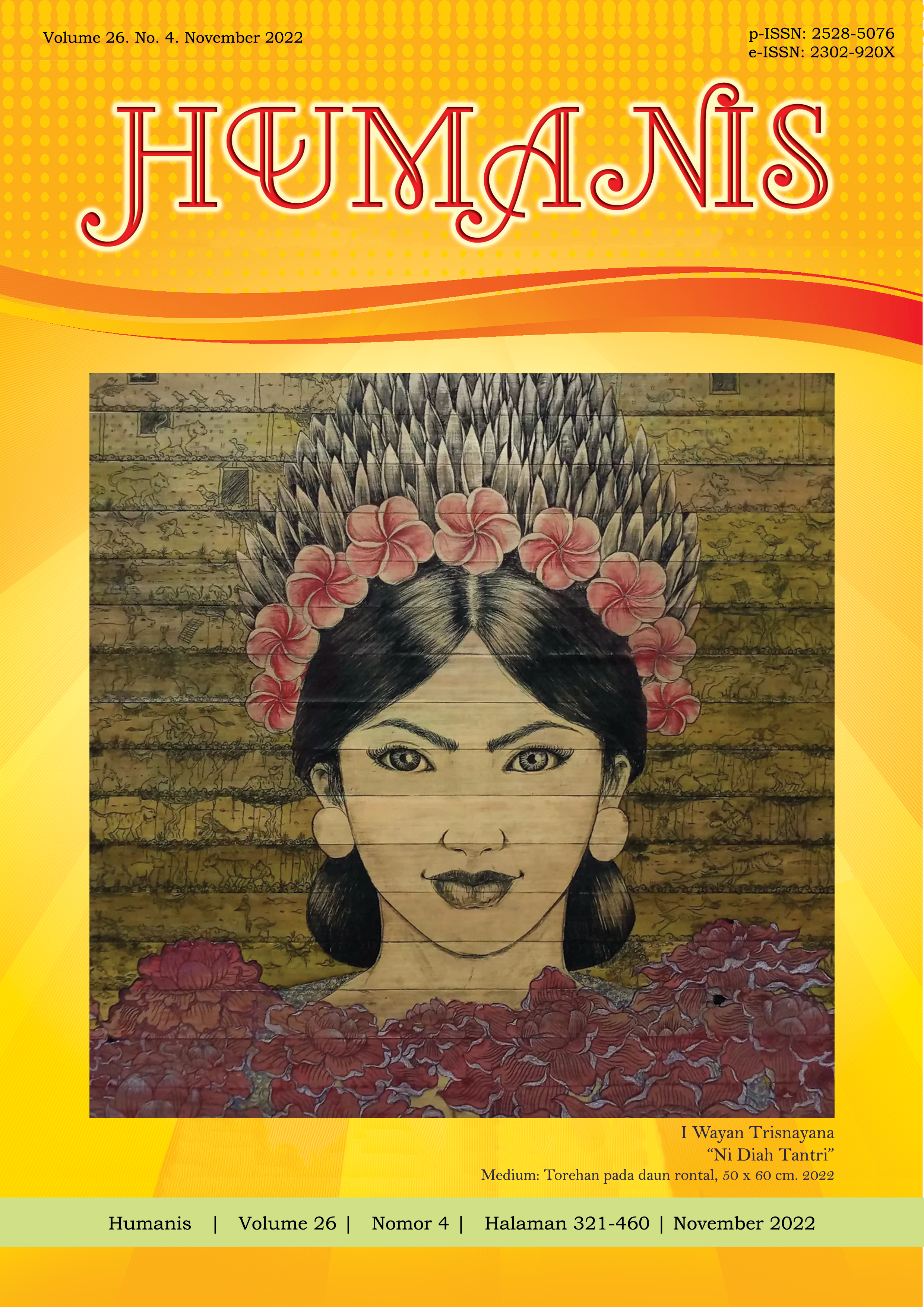Bali Tourism Discursive Strategies in “Balilivin” Instagram Account
Abstract
Today's popularity of a tourist destination is often supported by its existence on social media. Engaging narratives and pictures influence visitor interest in traveling to an area. This study aims to see the discourse strategy used by a highly followed Instagram account @balilivin in promoting tourist attractions in Bali using the theory of Wodak & Meyer (2001). The data was collected in January 2022. Using descriptive-qualitative method, the study found that most posts divide human social actors into visitors and locals. Bali as a destination and its people is described with a highly positive image with bombastic words. Pictures and captions framed Bali as an ideal paradise apart from various realities unshown on social media.
Downloads
References
Antara, M., & Sumarniasih, M. S. (2017). Role of Tourism in Economy of Bali and Indonesia. Journal of Tourism and Hospitality Management, 5(2). https://doi.org/10.15640/jthm.v5n2a4
Aprinica, N. P. I. (2021). Style of Language in Tourism Hotel Advertising. Linguistic, English Education and Art (LEEA) Journal, 5(11–18).
Ayomi, P. N. (2021a). Managing Interpersonal Meaning in Social Media: a Case Study of Indonesian Language Use. Academic Journal Perspective: Education, Language and Literature, 9(1).
Ayomi, P. N. (2021b). Trump Vs Jokowi: Exploring the Lexicogrammatical Variation of Head of States’ Twitter Communication. LITERA, 20(1), 179–195. https://doi.org/10.21831/ltr.v20i1.34554
Ayomi, P. N. (2022). Realisasi Makna Sikap Sebagai Pengungkap Pendirian dalam Percakapan Tentang Vaksinasi Covid-19 Di Twitter. Aksara, 34(1), 121–134. https://doi.org/10.29255/aksara.v34i1.814.121-134
Budiharjo, B., Nuraeni, A., Saptaningsih, N., Murti, B. D., & Rusjayanti, A. (2022). Persuasion in Tourism Promotion Bilingual Texts: The Importance of Syntactic Forms and Choices. Leksema: Jurnal Bahasa Dan Sastra, 7(1), 1–12. https://doi.org/10.22515/ljbs.v7i1.4419
Creswell, J. W. (2013). Research design: Qualitative, quantitative, and mixed methods approaches (Fourth Edi). Los Angeles: Sage Publication.
Crystal, D. (2001). Language and the Internet. Cambridge University Press. https://doi.org/10.1017/CBO9781139164771
Hallett, R. W., & Kaplan-Weinger, J. (2010). Official Tourism Websites. Multilingual Matters. https://doi.org/10.21832/9781845411381
Hayhurst, L. (2017). Survey highlights Instagram as key factor in destination choice among millennials.
Isti’anah, A. (2020). (Re)evaluating language attitudes on Indonesian tourism website: A study on ecolinguistics. Studies in English Language and Education, 7(2), 622–641. https://doi.org/10.24815/siele.v7i2.16683
Kasni, N. W., & Budiarta, I. W. (7AD). The multimodal forms of tourism promotional discourse in the age COVID-19. Journal of Linguistics, Literature and Culture, 6, 422-440.
Pesaresi, A., & Abbasian, S. (2022). Reality and Fiction: Scandinavian Tour Operators’ Image of Italy through Photographs. Journal of Quality Assurance in Hospitality & Tourism, 1–26. https://doi.org/10.1080/1528008X.2022.2035296
Pratiwi, D. P. E., Ayomi, P. N., & Candra, K. D. P. (2017). Balinese Arts and Culture As Tourism Commodity In Bali Tourism Promotion Videos. Mudra Jurnal Seni Budaya, 32(2).
Pratiwi, Desak Putu Eka, Ayomi, P. N., & Candra, K. D. P. (2017). Representation of Bali in Tourism Advertisement Videos. International Journal of Linguistics, Literature and Culture, 3(5), 14–25.
Wodak, R. (2015). Critical Discourse Analysis, Discourse‐Historical Approach. In The International Encyclopedia of Language and Social Interaction (pp. 1–14). Wiley. https://doi.org/10.1002/9781118611463.wbielsi116
Wodak, R. T., & Meyer, M. (2001). Methods of Critical Discourse Analysis. London: Sage Publication.
Zeng, B., & Gerritsen, R. (2014). What do we know about social media in tourism? A review. Tourism Management Perspectives, 10, 27–36. https://doi.org/10.1016/j.tmp.2014.01.001
.


















